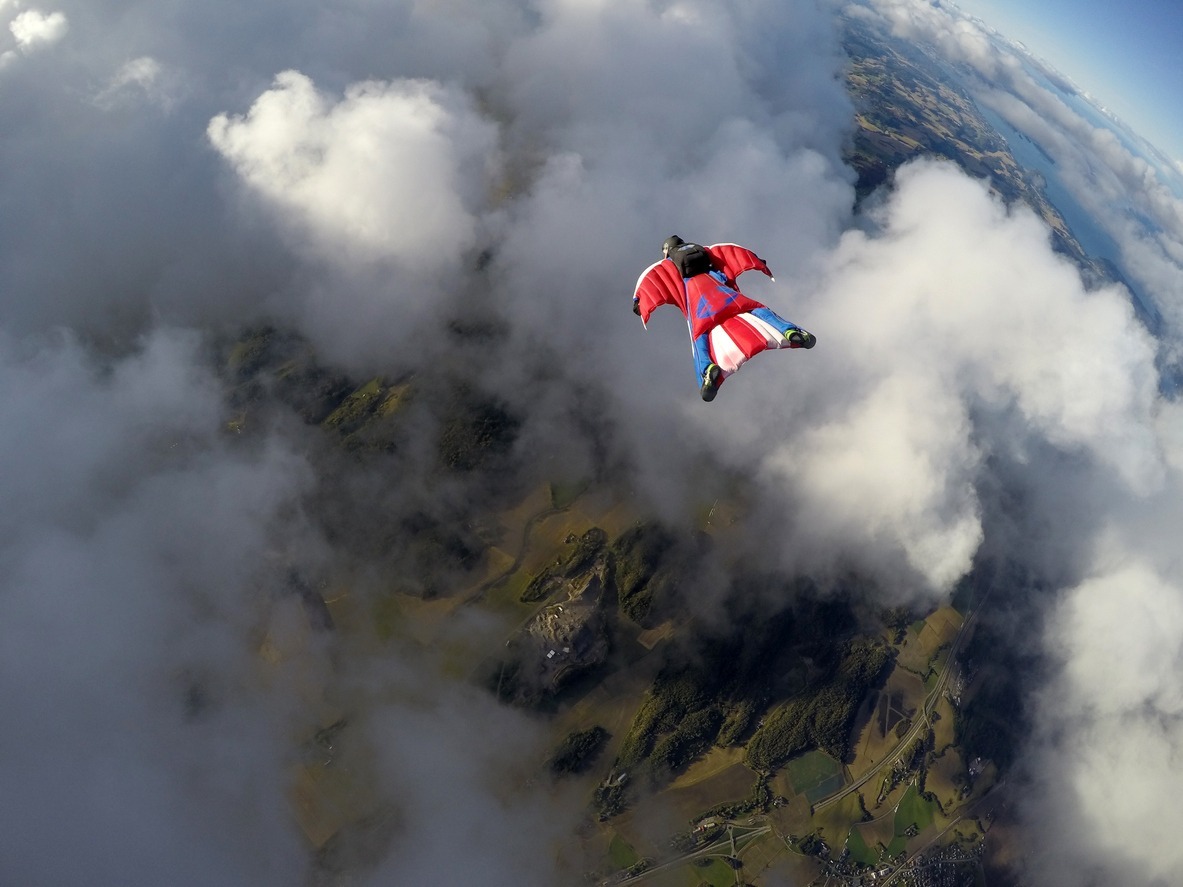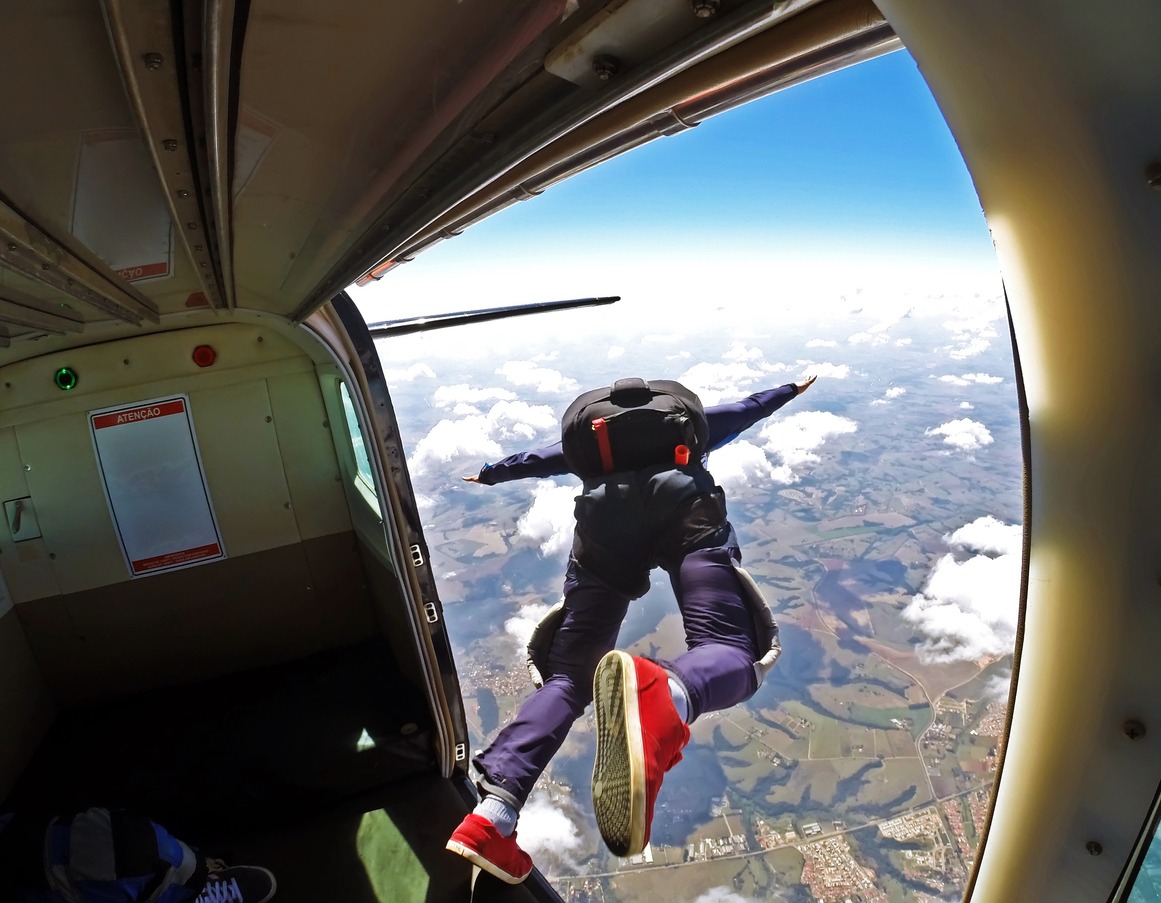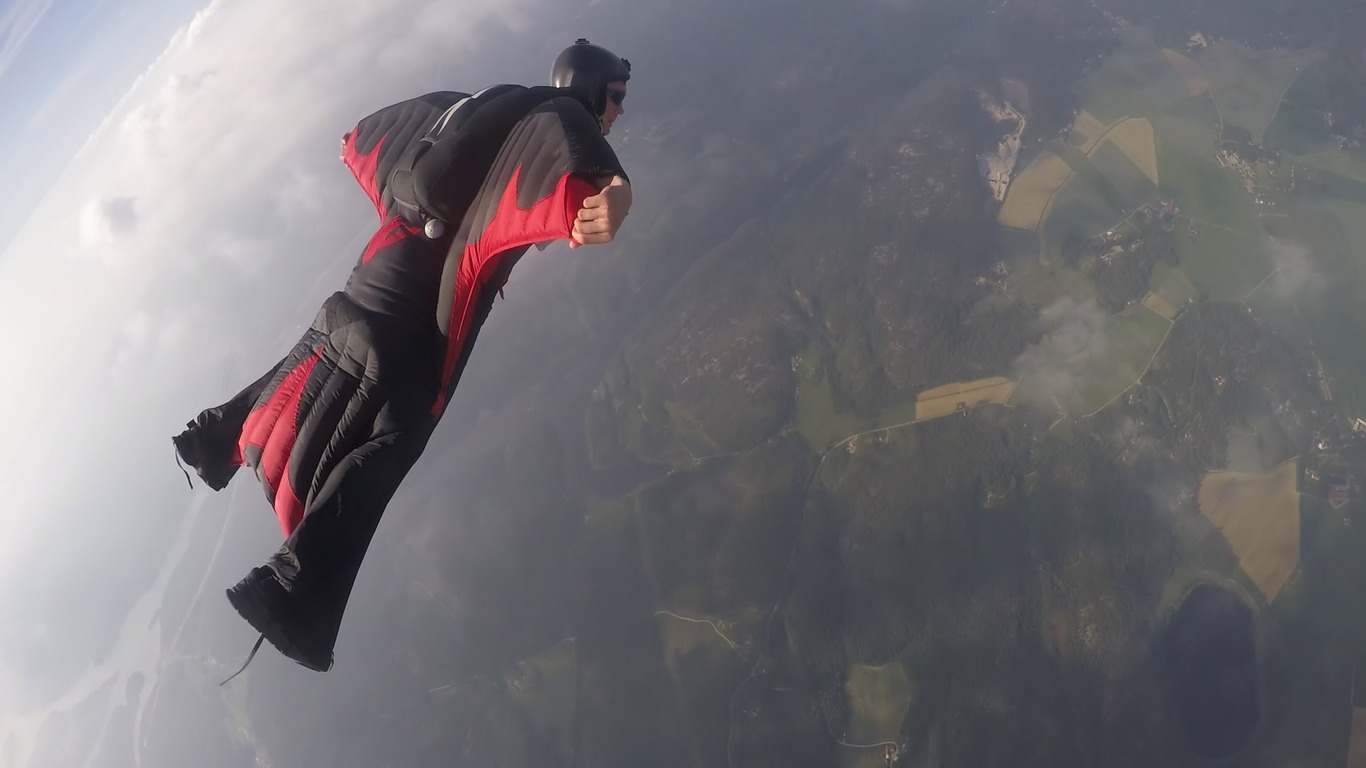Wingsuit flying, also called “wingsuiting,” is an extreme aerosport that lets people fly through the air, which is against the laws of nature. It has a special jumpsuit called a “wingsuit” that makes this type of practice so exciting. The suit makes the body’s surface area bigger, which could help the person fly.
The fabric between the legs and under the arms of the wingsuit is meant to make a large surface area. People also call these suits with wings “birdman suits,” “squirrel suits,” and “bat suits.” People think of the people who take part as “birdmen” because they can glide through the air at an average speed of 160–200 km per hour. After reaching a planned height, the pilots use a parachute to land, and if they need to, they can unzip their arm wings to reach the controls.
In May 2015, the United Kingdom’s Netheravon hosted the first FAI World Cup in Wingsuit Performance Flying. In Zephyrhills, USA, in November 2016, the First FAI World Wingsuit Performance Flying Championships were held.
Wingsuit Flying History
19-year-old Rex G Finney first used a wingsuit in 1930. He wanted to improve parachute movement and maneuverability. Early wingsuits were made of canvas, wool, silk, whalebone, and steel.
Patrick de Gayardon adapted John Carta’s wingsuits in the 1990s. Sammy Popov of Bulgaria created a new wingsuit in 1997 with longer wings between the legs and on the arms.
Chuck “Da Kine” Raggs developed a wingsuit with hard ribs in 1998. New modifications helped stabilize the wings in flight, but they made the suit heavier and harder to fly. These suits were never mass-produced.
Jari Kuosma and Robert Penik created a safer wingsuit in 1999. Kuosma set up Bird-Man International Ltd. in the same year. Birdman introduced the first enthusiast instructor program. Squirrel Wingsuits, TonySuits Wingsuits, Phoenix-Fly, Fly Your Body, and Nitro Rigging also offer coach training.
How to Learn How to Skydive with a Wingsuit
A wingsuit is not something to mess around with. It’s a bunch of fabric with a fighter plane’s engine inside. Since a wingsuit is an airfoil built around a person, you’ll need to put in a lot of time and effort to learn how to fly it, just like any other pilot. Aside from that, you’ll also need a lot of skydiving experience, good equipment, and good instruction.
How do you learn how to fly a wingsuit?
STEP 1: LEARN HOW TO SKYDIVE.
Start with a skydiving First Jump Course to learn how to fly a wingsuit. You’ll go through that training with the end goal of getting your license to skydive alone. Just getting your first license is a huge challenge, but if you want to put on a wingsuit and do some horizontal flying, you’ll have to jump through a lot more hoops after that.
STEP 2: JUMP REGULARLY UNTIL YOU REACH THE REQUIRED THRESHOLD NUMBER OF JUMPS.
The United States Parachute Association says that anyone doing their first wingsuit skydive should have done at least 200 jumps in the last 18 months. If you have less than that, it will be nearly impossible for you to find a good teacher. At this point, people who skydive know that putting brand-new skydivers in wingsuits is dangerous. Not only is it smart from a safety point of view to wait to try a wingsuit until the right time in your skydiving career, but it’s also fun. When you make your first wingsuit jumps, they will be a lot more fun if you have already done a lot of jumps. Simply put, if you do this step by step, you’ll become a better, less stressed pilot faster.
STEP 3: ENROLL IN A WINGSUIT FIRST JUMP COURSE (WFJC).
When you have 200 jumps in your logbook that have been checked, you can sign up for a well-run first wingsuit jump course (FWJC). Get ready to roll around on a creeper and think about some pretty weird things that could go wrong.
STEP 4. GEAR UP.
When you have enough skydiving experience to go to wingsuit school for the first time, you’ll already have your own parachuting gear. At the very least, that will include a container, a main parachute, a backup parachute, a device that turns the main parachute on automatically, at least one altimeter, and a helmet.
STEP 5. GET COACHING.
You’ll still have a lot to learn after your FWJC. It will be both exciting and, well, overwhelming. The best way to move forward is to hire a wingsuit coach to help you figure out the hard parts. When you watch third-person video of your flights, you can get immediate, useful feedback that can help you make big changes faster than you might think. Keep in mind that even the best pilots in the world get help. You should do what they do!
Recommended Equipment
Rig and deployment system. The rig must be safe in the same way you would expect a rig to be safe for free flying, and it must only have a BOC throwaway pilot chute with a kill line.
Because wing suit flying is done at slower speeds, bungee pilot chutes are not recommended. There might not be enough airflow through the bungee to open the pilot chute and let it open the main. A bungee pilot chute doesn’t have a kill line that runs from the top of the pilot chute all the way down to the deployment bag. Instead, the pilot chute has a bungee inside it. If you pull on the top and bottom of a bungee pilot chute, it will stretch and then go back to being flat.
You can’t use leg-mounted pilot chutes for wing suiting because they will be hidden inside the wing suit and hard to get to.
The same goes for pull-out deployment systems. With the extra noise the arm wing makes and the length of the small bridle between the handle and the pin, it is hard to get the pilot chute into clean air. Also, when the pin is pulled, the main container opens. This lets the main deployment bag bounce freely down the leg wing, which could cause a problem.
Ripcord deployment is also not recommended for the main parachute used in wing suiting, unless it was made for use with wing suits. This is because a wing suit makes a much bigger burble behind the jumper, and the spring-loaded chutes used for main canopies are often not as strong or have lost some of their power compared to those used for a reserve.
Canopy. For the student’s first flight, the main parachute should match the student’s experience, currency, and the type of canopy they usually jump. More important is that you feel comfortable with the way the canopy looks and how it opens. If the student wants to jump an elliptical or X-braced canopy with a lot of weight on it, make sure they are ready for what could happen!
A larger, more docile canopy, preferably square and not elliptical, is a good idea. 7-cell canopies are also known to have more consistent openings.
Don’t forget that as a Wing Suit Coach, you can refuse to jump with them if you don’t like their gear.
Altimeters, visual and audible. Visual altimeters that are worn on the wrist or hand work best. Because air flows and moves at different speeds over the body, a chest-mounted altimeter may be off by up to 300m or 1000ft.
For safety reasons, you should always put on your wrist visual altimeters and gloves before your wingsuit thumb/hand loops. This is so that, if the wingsuit being used has thumb/hand loops, the loops can be taken off under the canopy if needed.
Most audible altimeters will work as expected, but some may need to be set to slow flight.
AAD’s. If the student has an AAD, they should know that it might not work if they are in full flight at the firing altitude. When in full flight, the rate of descent can easily be slower than the speed at which the AAD kicks in. For instance, a Cypress goes off at a descent rate of 78mph (35m/s or 125km/h) and an altitude of 750ft (225m). This means that if you were in full flight at 750ft (225m) or less, the Cypress would think you opened your canopy and not fire the reserve. However, if you were unconscious and/or tumbling, this is much more likely to give you a fall rate high enough to trigger the AAD.
Extras. When wing suiting, there are a few extra things that can be done to help with deployment. Due to slower freefall speeds, a slightly bigger Pilot chute can help catch a little more air. Along with this, a longer bridle can help get the pilot chute into cleaner air and away from the noise, making it easier and faster to open.
Some people like to put the deployment bag in the reserve container with the bridle and grommet at the top instead of at the bottom.
Lastly, cutting out the corners of the main tray on the container can make it easier for the deployment bag to get out of the container. Now, many companies that make containers offer this as a choice. These extra ways to help are nice to have, but they are not necessary.
Conclusion
Wingsuit flying is widely considered to be one of the most extreme and hazardous sports practiced today. The topic of safety is the primary source of debate among sports professionals. The primary reason for danger is that the jump must be performed from a very low height, which does not allow the athlete enough time to deploy a second parachute in the event of an emergency or to use the suit’s wings in the event that they do not function properly. Even the smallest mistake made during training could end in someone’s death.



